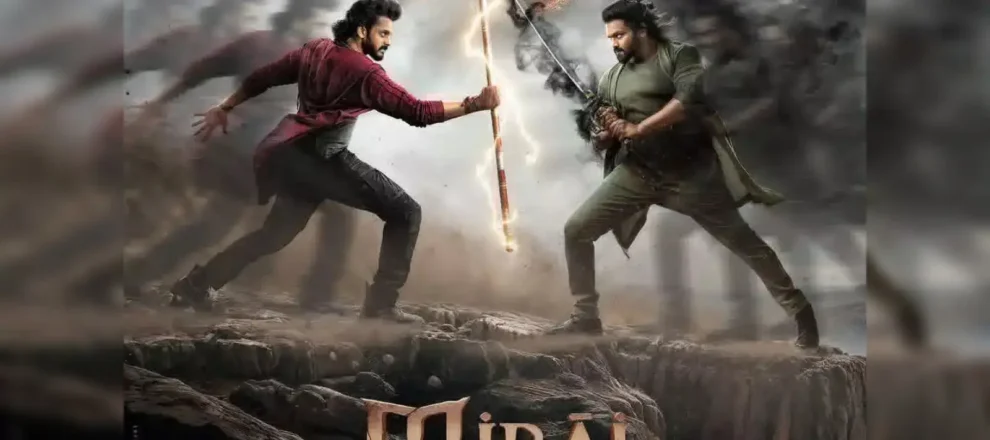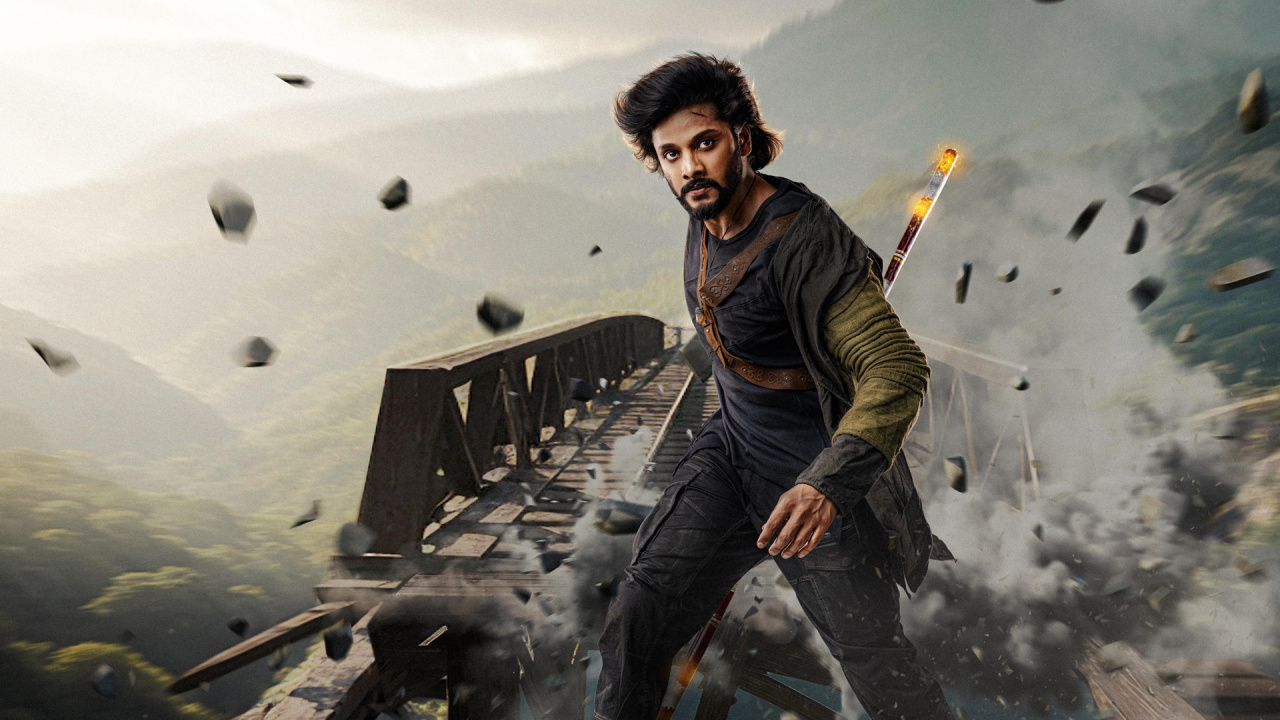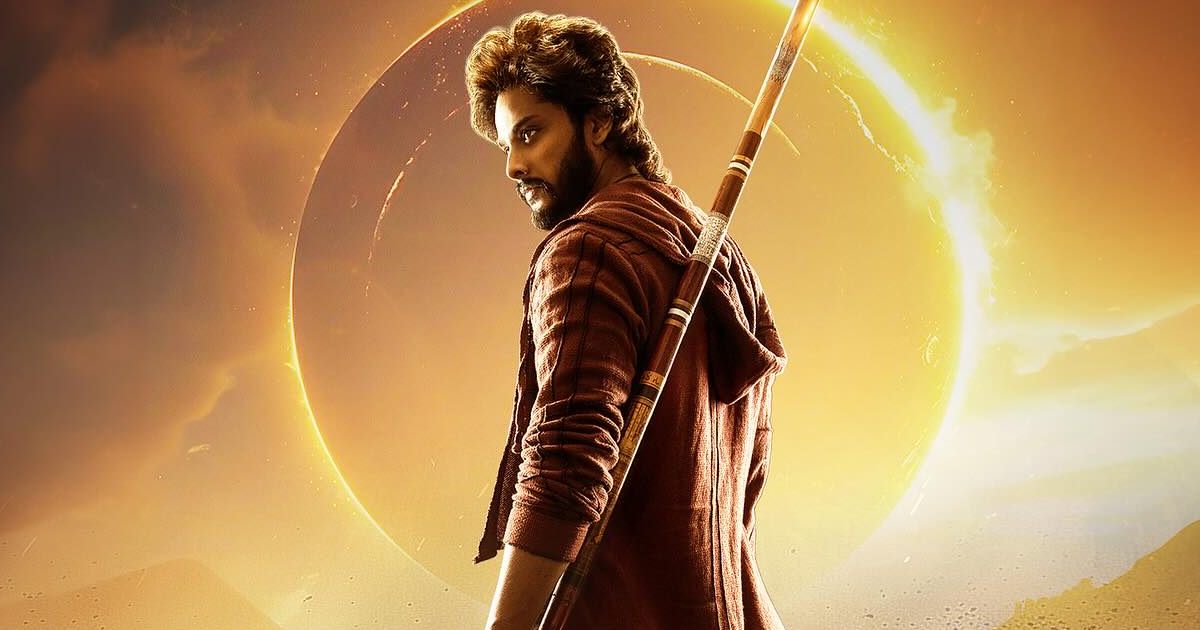Mirai (2025), a Telugu-language fantasy action film directed by Karthik Gattamneni, is an ambitious attempt to weave Indian mythology, history, and superhero tropes into a grand cinematic tapestry. Starring Teja Sajja as the protagonist Vedha Prajapathi, alongside Manchu Manoj as the antagonist Mahabir Lama (aka Black Sword), Ritika Nayak as Vibha, and Shriya Saran as Ambica, the film explores a mythical narrative rooted in Emperor Ashoka’s legendary nine sacred scriptures.
Released on September 12, 2025, Mirai has garnered significant attention for its blend of mythological depth, high-octane action, and stunning visual effects, positioning it as a notable entry in Telugu cinema’s growing pantheon of pan-India blockbusters.
With a runtime of 2 hours and 49 minutes, the film aims to captivate audiences with its epic scope, but does it live up to the hype generated by Teja Sajja’s previous success, Hanu-Man (2024)? This review delves into the film’s strengths, weaknesses, and overall impact, critically examining its narrative, performances, technical achievements, and cultural resonance.
Mirai (2025): A Mythological Superhero Saga
Mirai is set against a backdrop that intertwines historical legend with fantastical elements, drawing inspiration from the myth of Emperor Ashoka’s “Nine Unknown Men,” a secretive order tasked with safeguarding nine sacred scriptures. These texts, created after Ashoka’s remorse following the Kalinga War, are said to hold divine knowledge capable of transforming a mortal into a deity.
The story spans centuries, culminating in the year 2000, where the narrative introduces Ambica (Shriya Saran), a protector of the ninth scripture, who possesses foresight and foresees the rise of Mahabir Lama, a ruthless warlord seeking immortality through the scriptures. To thwart his ambitions, Ambica makes a fateful decision that ties the destiny of her son, Vedha Prajapathi (Teja Sajja), to the legacy of these sacred texts.
The plot follows Vedha, a street-smart orphan from Hyderabad, who is unaware of his divine purpose until Vibha (Ritika Nayak), a young sadhvi, tracks him down to reveal his destiny as the chosen “Super Yodha.” As Mahabir, wielding a cursed black sword, seizes several scriptures, the stakes escalate, leading to a climactic battle that blends mythology, spirituality, and action.
The narrative raises compelling questions: What is Mirai? Can Vedha rise to stop Mahabir? How does the mythical weapon Mirai connect to the Ramayana and Lord Rama? The answers unfold through a mix of historical references, spiritual undertones, and modern superhero dynamics, creating a narrative that is both ambitious and intricate.
The first half of Mirai effectively sets up its core concept, with a voice-over by Prabhas introducing the Kalinga War and the significance of the nine scriptures, instantly hooking the audience with a sense of grandeur. The screenplay, penned by Karthik Gattamneni and Manibabu Karanam, maintains a brisk pace, weaving together Vedha’s urban life, Mahabir’s menacing quest, and the mystical elements of the Yodhas’ legacy.
However, the narrative falters in parts, particularly in the first hour, where the urgency of the threat feels underdeveloped, and some sequences drag due to predictable plotting. The second half picks up momentum, with standout moments like the pre-interval sequence in the Himalayas featuring a giant eagle and the climactic showdown at Siddha Kshetram, which ties the story to the Ramayana in a thrilling, goosebump-inducing manner.
While the film excels in blending mythology with modernity, it occasionally struggles with emotional depth. Unlike Hanu-Man, which balanced spectacle with heartfelt character arcs, Mirai’s emotional beats, particularly the mother-son dynamic between Vedha and Ambica, feel underdeveloped.
The screenplay’s focus on visual grandeur sometimes overshadows character development, leaving certain moments, such as Mahabir’s backstory, less impactful than intended. Additionally, the climax, while visually spectacular, feels underwhelming for some, with an abrupt resolution to Mahabir’s arc that lacks the emotional weight expected from such a formidable antagonist.
Performances: Teja Sajja Shines, Manchu Manoj Impresses
Teja Sajja, fresh off the success of Hanu-Man, delivers a standout performance as Vedha, embodying both the carefree charm of a Hyderabad orphan and the gravitas of a destined warrior. His ability to transition between light-hearted humour and intense action sequences showcases his growth as an actor. Sajja’s portrayal of Vedha’s internal struggle—torn between disbelief and duty—adds relatability to the character, making him a compelling anchor for the film. His action sequences, particularly in the second half, reflect his dedication, with choreography that highlights his agility and screen presence.
Manchu Manoj, as the antagonist Mahabir Lama, brings a ferocious intensity to the role, with his commanding screen presence and menacing expressions. His portrayal of a villain driven by a thirst for immortality is effective, particularly in the Morocco fight sequence and his confrontations with Vedha. However, the script limits the depth of his character, with his backstory feeling rushed and his motivations not fully explored, which slightly undermines his impact.
Ritika Nayak, as Vibha, delivers a competent performance, though her role as the catalyst for Vedha’s journey feels somewhat underwritten. Shriya Saran’s portrayal of Ambica is poignant, especially in scenes emphasizing her sacrifice, but her limited screen time prevents a deeper emotional connection. Supporting actors like Jagapathi Babu, as the elder guardian Anganambali, and Jayaram, as the sage Agastya (referred to as “AG” by Gen-Z characters), add gravitas and charm, respectively. The surprise inclusion of Rana Daggubati in a cameo role adds value to the narrative, though it feels underutilized.
Technical Brilliance: Visuals, VFX, and Music
Mirai’s technical achievements are among its strongest assets. Karthik Gattamneni, doubling as the cinematographer, crafts a visually striking aesthetic, with lush landscapes, vibrant cityscapes, and mystical settings that enhance the film’s epic scope. The production design by Nagender Tangala and art direction by Dasireddy Srinivas create a polished, immersive world, from the ancient monasteries to the urban sprawl of Hyderabad.
The visual effects, while occasionally inconsistent, are largely impressive for a moderate-budget film, with sequences like the Sampati bird and the Siddha Kshetram showdown standing out for their seamless integration with the narrative.
Gowra Hari’s background score is a highlight, elevating key sequences to cinematic highs. His original compositions, particularly during the pre-interval eagle sequence and the “Jaithraya” song, induce goosebumps and amplify the film’s emotional and action-packed moments. Unlike Hanu-Man, which relied on devotional music, Mirai’s score is distinctively modern yet rooted in mythological grandeur, making it a standout feature. The editing by Sreekar Prasad, while generally effective, could have been tighter, as the film’s 2-hour-49-minute runtime feels stretched in certain portions, particularly in the first half.
The action choreography, blending martial arts like Kungfu, Samurai, and Judo, is well-executed, with sequences like the Morocco fight and the climactic battle showcasing raw energy and technical finesse. However, some action scenes, particularly in the second half, feel overly protracted, leading to viewer fatigue. The film’s high production values, courtesy of People Media Factory, reflect a commendable balance of ambition and budget, making Mirai a visual spectacle that rivals bigger-budget productions.
Cultural and Mythological Resonance
Mirai distinguishes itself by rooting its superhero narrative in Indian mythology, particularly the Ramayana, with references to Lord Rama, Sampati, and sage Agastya’s “spiritual physics.” The film’s connection to Ashoka’s nine scriptures and the concept of Sanatana Dharma adds cultural depth, resonating with audiences familiar with these legends. The climactic sequence, tying Vedha’s journey to Lord Rama, is a masterstroke that evokes emotional and spiritual engagement, though some viewers may find the heavy mythological references confusing without context.
Compared to recent mythological successes like Kalki 2898 AD and Mahavatar Narsimha, Mirai carves its own niche by blending anime-inspired imagination with Indian heritage. However, it falls short of Hanu-Man’s emotional depth, which connected more effectively with audiences through its devotional undertones. Mirai’s ambition to create a new cinematic universe is evident, with the stage set for a sequel, but it needs to address narrative pacing and character development to fully realize its potential.
Box Office and Reception
Mirai has enjoyed a strong opening, reportedly earning ₹12 crore on its first day and crossing ₹50 crore globally by its third day, with significant success in the US, where it surpassed the $1 million mark. The film’s pan-India release in Telugu, Hindi, Tamil, Kannada, Malayalam, Bengali, Marathi, and Chinese, backed by Karan Johar’s Dharma Productions for distribution, has broadened its reach. Audience reactions on platforms like X praise the film’s visuals, Teja Sajja’s performance, and mythological depth, though some criticize the predictable first half and average climax. Critics have rated the film between 3.25 and 4.5 out of 5, reflecting its strengths in spectacle but acknowledging narrative flaws.
Verdict: A Worthy Watch with Room for Growth
Mirai is a bold and visually spectacular addition to Telugu cinema’s growing repertoire of mythological superhero films. Teja Sajja’s confident performance, Karthik Gattamneni’s ambitious direction, and Gowra Hari’s electrifying score make it a theatrical experience worth savouring, particularly for fans of mythology and action.
While the film excels in its world-building, VFX, and cultural resonance, it is held back by pacing issues, an emotionally distant narrative, and an underwhelming climax. With a tighter screenplay and deeper character arcs, Mirai could have matched the emotional impact of Hanu-Man. Nevertheless, it remains a commendable effort that showcases the potential of Telugu cinema to create globally appealing spectacles on a moderate budget.
Rating: 3.5/5
Recommendation: Watch Mirai in theatres for its breathtaking visuals and mythological grandeur. It’s a must-see for fans of Teja Sajja and Indian superhero cinema, but temper expectations for narrative depth.



